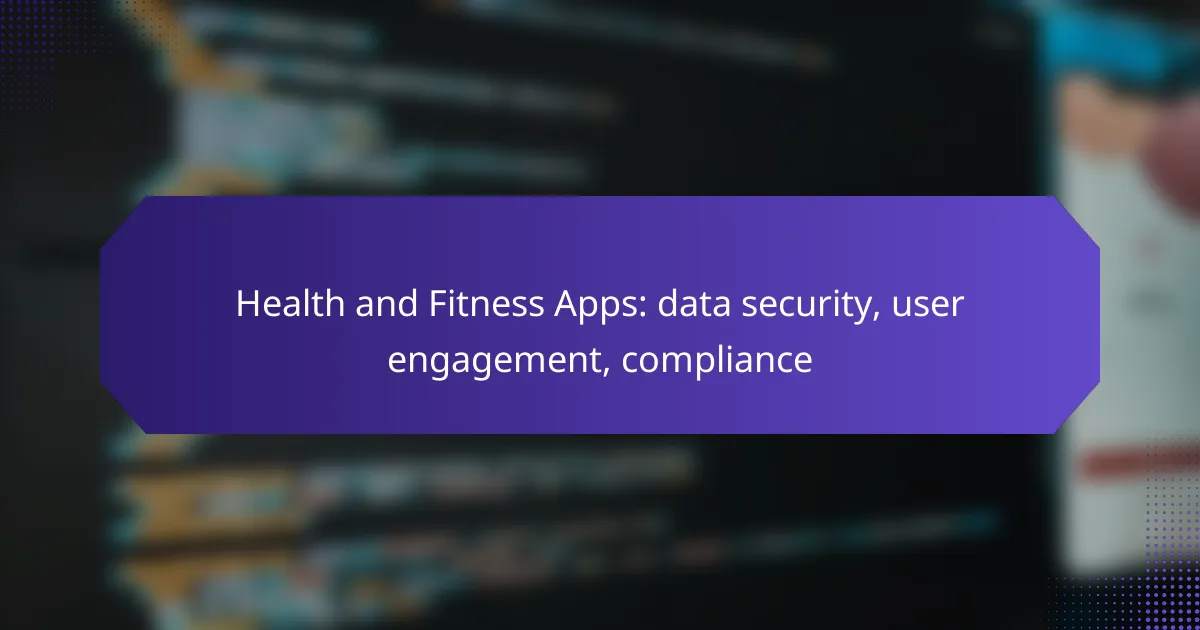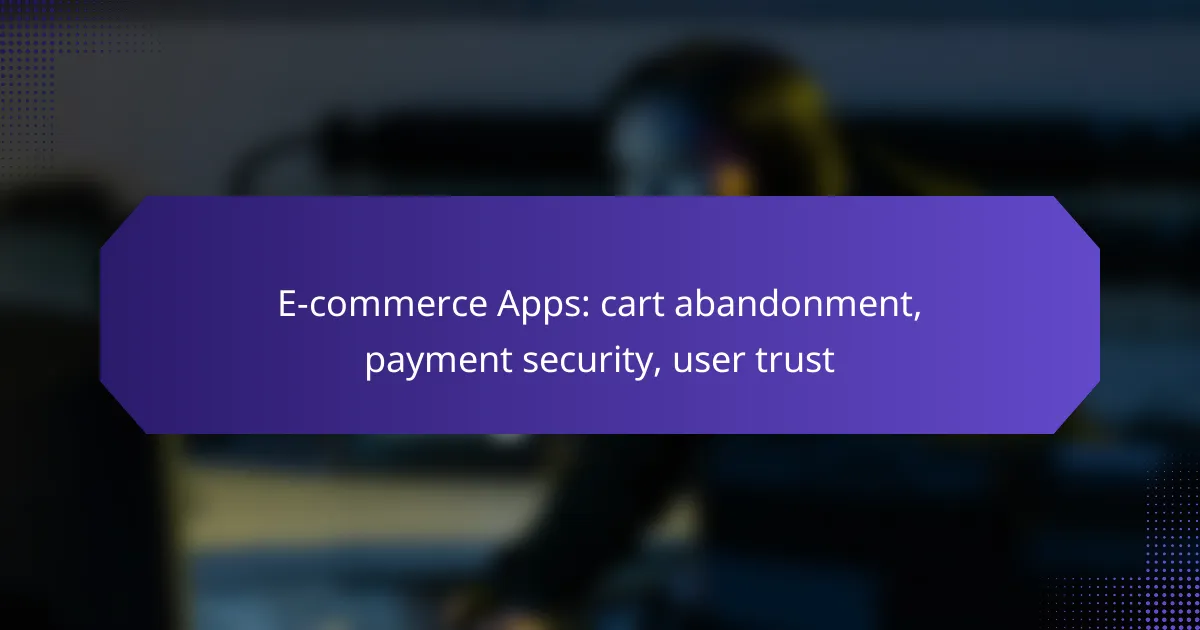The lifestyle app market is facing significant challenges due to saturation, where the abundance of available applications surpasses consumer demand, resulting in reduced user engagement. To combat this, developers must focus on creating tailored experiences that resonate with users, while also being cautious of feature creep, which can complicate the user experience and detract from core functionalities. By prioritizing personalized content and community-driven elements, lifestyle apps can foster higher levels of user involvement and satisfaction.
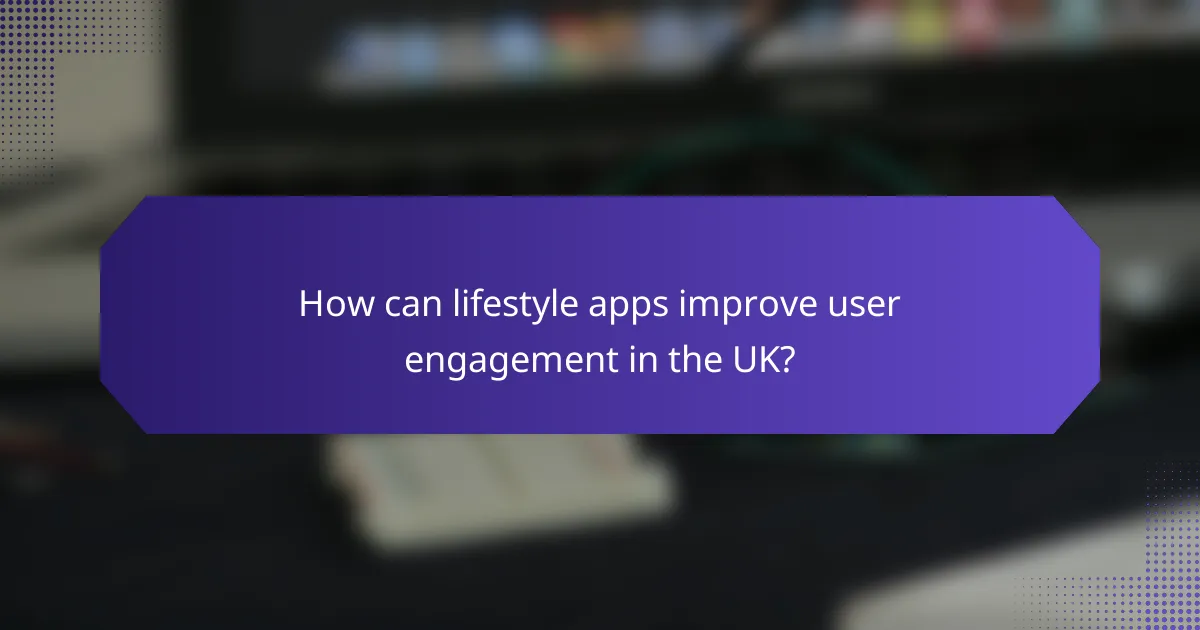
How can lifestyle apps improve user engagement in the UK?
Lifestyle apps in the UK can enhance user engagement by offering tailored experiences that resonate with individual preferences. By focusing on personalized content, interactive features, and community-driven elements, these apps can keep users actively involved and returning regularly.
Personalized content recommendations
Personalized content recommendations are crucial for keeping users engaged with lifestyle apps. By analyzing user behavior and preferences, apps can suggest articles, workouts, recipes, or activities that align with individual interests. This tailored approach not only enhances user satisfaction but also encourages longer app usage.
For instance, a fitness app might recommend specific workout routines based on a user’s past activities or goals. This level of customization can significantly increase the likelihood of users returning to the app regularly.
Gamification features
Gamification features can significantly boost user engagement by making the app experience more enjoyable and rewarding. Incorporating elements like points, badges, and leaderboards encourages users to participate more actively. This competitive aspect can motivate users to achieve their goals while enjoying the process.
For example, a wellness app could reward users with points for completing daily challenges, which can be redeemed for discounts or exclusive content. This not only fosters a sense of achievement but also builds a community around shared goals.
Social sharing capabilities
Integrating social sharing capabilities allows users to connect with friends and share their achievements, enhancing community engagement. When users can post their progress or favorite content on social media, it encourages others to join and participate in the app’s offerings.
For instance, a cooking app that allows users to share their culinary creations on platforms like Instagram can create a buzz and attract new users. This word-of-mouth marketing is invaluable for app growth and user retention.
Regular updates and new features
Regular updates and the introduction of new features keep the app experience fresh and engaging. Users are more likely to stay active if they see continuous improvements and new content that enhances functionality or enjoyment.
For example, a lifestyle app might introduce seasonal challenges or new workout plans every few months, encouraging users to explore different aspects of the app. This strategy not only retains current users but also attracts new ones looking for the latest trends.
User feedback integration
Integrating user feedback into app development is essential for improving user engagement. By actively soliciting and implementing suggestions, developers can create a product that better meets the needs and desires of its audience.
For example, conducting surveys or using in-app feedback tools can provide insights into what users want to see improved or added. This responsiveness fosters a sense of community and ownership among users, making them more likely to remain loyal to the app.
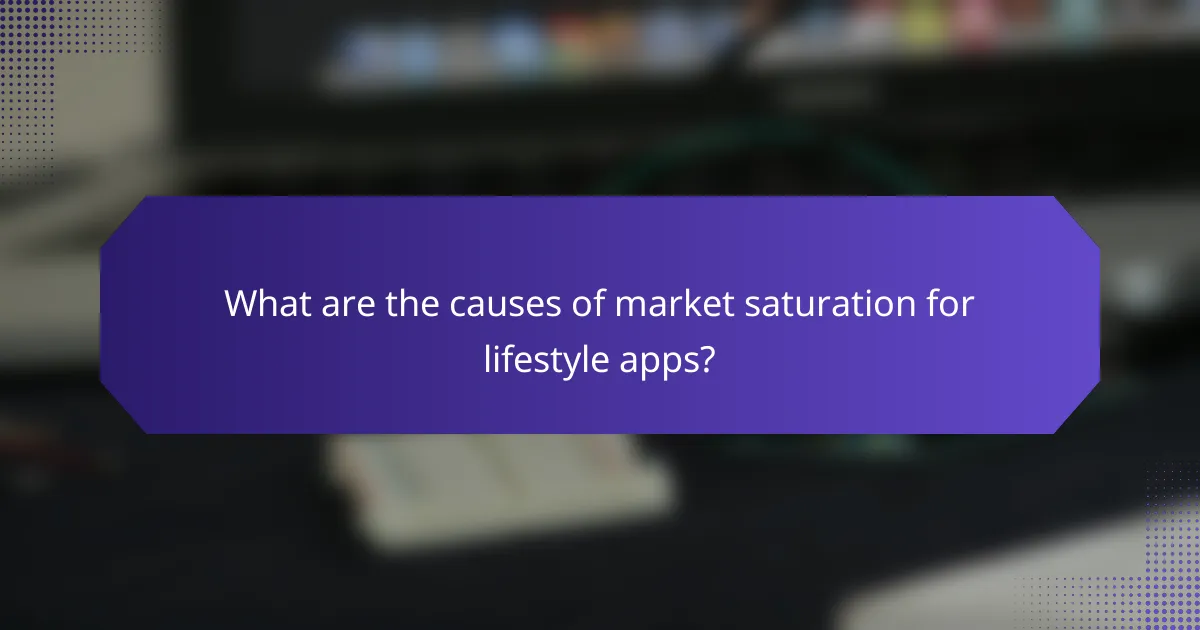
What are the causes of market saturation for lifestyle apps?
Market saturation for lifestyle apps occurs when the number of available applications exceeds consumer demand, leading to diminished user engagement and profitability. Key factors contributing to this saturation include intense competition, overlapping features, the influx of new developers, and consumer fatigue with similar offerings.
High competition among app developers
The lifestyle app market is characterized by a high level of competition, with numerous developers vying for user attention. This saturation can lead to aggressive marketing tactics and price wars, which may reduce profit margins for developers. As a result, many apps struggle to differentiate themselves in a crowded marketplace.
To stand out, developers must focus on unique value propositions, such as specialized features or targeted user experiences. This can involve identifying niche markets or offering personalized content that resonates with specific user demographics.
Overlapping functionalities
Many lifestyle apps offer similar functionalities, making it difficult for users to choose between them. Features such as fitness tracking, meal planning, and social sharing often overlap, leading to confusion and decision fatigue among consumers. This redundancy can dilute brand loyalty and user engagement.
Developers should consider refining their app’s focus to avoid feature creep, which can complicate user experience. Instead, prioritizing a few core functionalities that address specific user needs can enhance satisfaction and retention.
Market entry of new players
The continuous entry of new players into the lifestyle app market exacerbates saturation. Startups and established companies alike are launching apps that target similar audiences, further intensifying competition. This influx can lead to a rapid cycle of innovation but also increases the noise that users must sift through.
To navigate this challenge, existing developers should keep an eye on emerging trends and adapt their offerings accordingly. Collaborations or partnerships with new entrants can also provide opportunities to enhance features and reach new audiences.
Consumer fatigue with similar apps
As users encounter an overwhelming number of similar lifestyle apps, they may experience fatigue and disengagement. This phenomenon can result in decreased downloads and higher uninstall rates, as consumers become less willing to try new applications that do not offer significant improvements over existing ones.
To combat consumer fatigue, developers should focus on delivering unique experiences and continuous updates that keep users engaged. Implementing user feedback into app development can also ensure that features remain relevant and appealing, helping to maintain user interest over time.
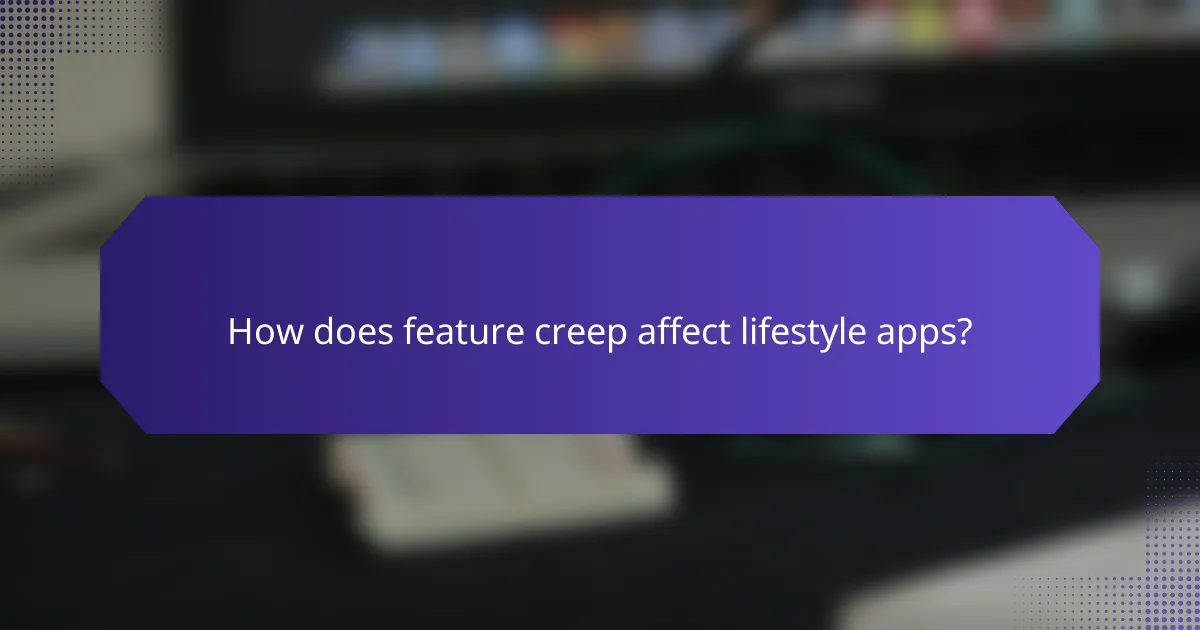
How does feature creep affect lifestyle apps?
Feature creep in lifestyle apps refers to the gradual addition of unnecessary features that complicate the user experience. This phenomenon can lead to increased complexity, higher development costs, and a potential loss of core functionality, ultimately impacting user satisfaction and engagement.
Increased complexity for users
As more features are added to lifestyle apps, users often find the interface becoming cluttered and confusing. This complexity can lead to frustration, as users may struggle to navigate through numerous options that they may not need or understand. A streamlined app experience is typically more appealing, making it essential to prioritize user-friendly design.
To mitigate complexity, developers should focus on core functionalities that address user needs. Regular user feedback can help identify which features are genuinely valuable and which may be superfluous.
Higher development costs
Feature creep can significantly inflate the development costs of lifestyle apps. Each new feature requires additional coding, testing, and maintenance, which can stretch budgets and timelines. This can be particularly challenging for startups or smaller companies with limited resources.
To manage costs effectively, teams should adopt a lean development approach, prioritizing essential features and deferring or eliminating less critical ones. Utilizing agile methodologies can also help in iterating on features based on user feedback, ensuring that resources are allocated efficiently.
Potential loss of core functionality
As lifestyle apps accumulate features, there is a risk that core functionalities may become diluted or overlooked. Users may find that the app no longer performs its primary purpose effectively, leading to dissatisfaction and potential abandonment. This shift can undermine the app’s value proposition.
To prevent this loss, developers should regularly assess the app’s core functionalities and ensure they remain at the forefront of updates. Conducting usability testing can help identify areas where core features may be suffering due to the addition of new elements.
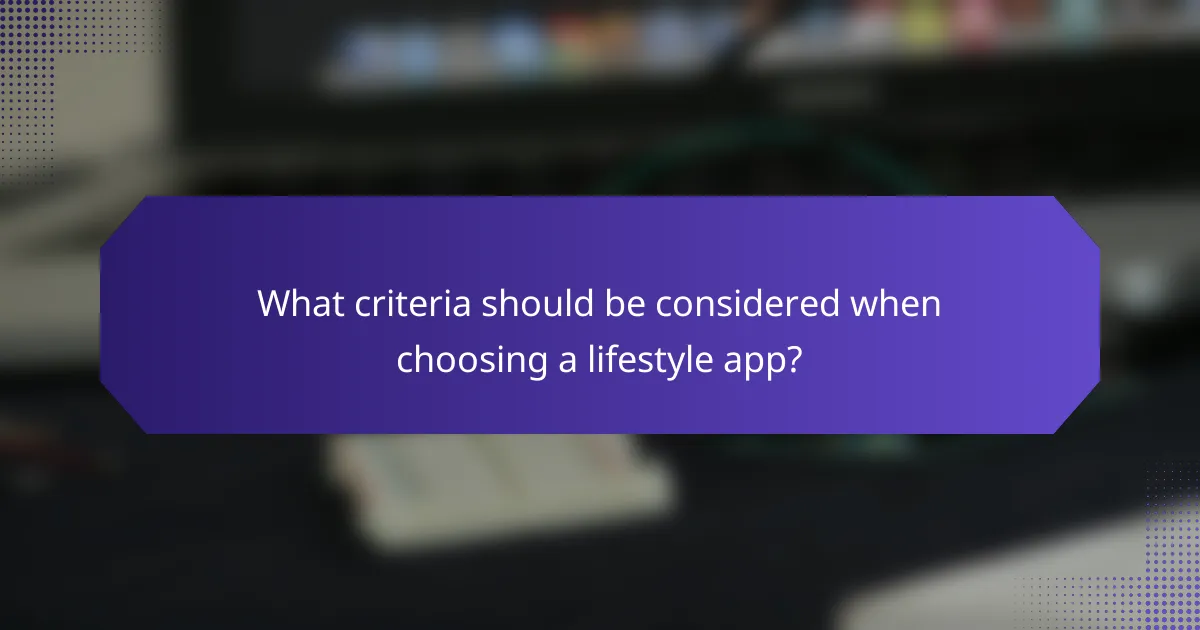
What criteria should be considered when choosing a lifestyle app?
When selecting a lifestyle app, consider factors such as user interface, privacy measures, and integration capabilities. These criteria can significantly impact your overall experience and satisfaction with the app.
User interface and experience
The user interface (UI) and user experience (UX) are crucial for ensuring that the app is easy to navigate and enjoyable to use. Look for apps that offer intuitive designs, clear layouts, and responsive interactions. A well-designed app can enhance engagement and encourage regular use.
Consider testing the app before committing. Many lifestyle apps offer free trials or demo versions, allowing you to assess the UI and UX firsthand. Pay attention to how quickly you can access features and whether the app feels cluttered or streamlined.
Privacy and data security measures
Privacy and data security are essential when choosing a lifestyle app, especially since many collect personal information. Check if the app complies with relevant regulations, such as GDPR in Europe or CCPA in California, which govern data protection and user consent.
Look for apps that provide clear privacy policies and robust security features, such as end-to-end encryption and two-factor authentication. Avoid apps that do not transparently communicate how they handle your data or that have a history of data breaches.
Integration with other platforms
Integration with other platforms can enhance the functionality of a lifestyle app, allowing for a more seamless experience. Consider whether the app connects with your existing tools, such as fitness trackers, calendars, or social media accounts.
Evaluate the ease of integration and the range of compatible platforms. Apps that work well with popular services can save you time and effort, making it easier to manage various aspects of your lifestyle in one place.
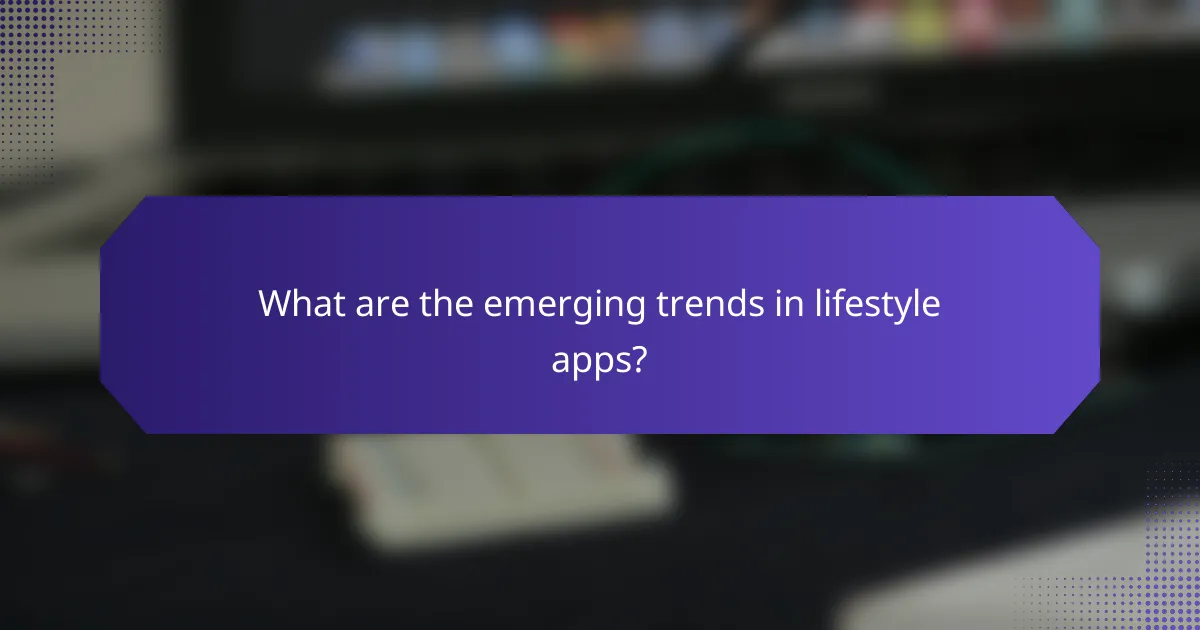
What are the emerging trends in lifestyle apps?
Emerging trends in lifestyle apps focus on enhancing user experience through personalization, mental health support, and community engagement. As the market becomes saturated, developers are prioritizing features that foster user retention and meaningful interactions.
Focus on mental health and wellness
The increasing awareness of mental health has led to a surge in lifestyle apps dedicated to wellness. These applications often include features like guided meditations, mood tracking, and access to mental health resources. Users are seeking tools that not only help manage stress but also promote overall well-being.
When developing or choosing a mental health app, consider the variety of features offered. Some apps provide personalized content based on user input, while others may include community forums for shared experiences. It’s essential to select an app that aligns with individual needs and preferences.
Common pitfalls include overloading the app with too many features, which can lead to user confusion. Focus on a few core functionalities that genuinely enhance mental health, and ensure the user interface remains intuitive. Regular updates based on user feedback can also improve engagement and satisfaction.








